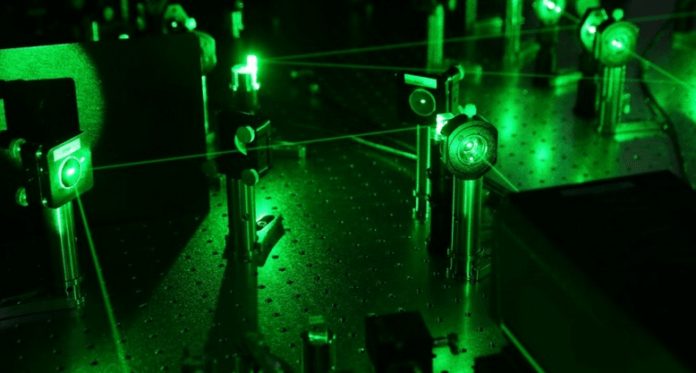The race to the fastest Quantum Computer Prototype is on with D-Wave, a Canada-based company, claiming to be the first to offer a commercially viable quantum computer. Various theories on quantum computers have existed for decades but many technology critics were skeptical about the creation of a machine that can utilize the principles of quantum physics practically.
Theories of computer science and quantum physics do support the creation of a fully functional quantum computer capable of outperforming the best conventional silicon semiconductor-based supercomputer. This technology would usher in the dawn of a new era and help solve the problems considered too big to be tackled by current computing technologies and resources. Quantum technology is expected to heavily facilitate the emerging disciplines of artificial intelligence, robotics, nano technology, bioinformatics and so on.
At the other end of the spectrum, Chinese physicists are also claiming to have developed a quantum computer prototype based on multi-photon entanglement that beats the previous record of 9 superconducting quantum qubits in 2015, set by a research team from Google, NASA and the University of California at Santa Barbara.
This Chinese machine is called “Boson Sampling Machine” and was developed by a Chinese team of scientists led by a quantum physicist Pan Jianwei, along with Zhu Xiaobo and Wang Haohua at the University of Science and Technology in Hefie. The announcement was welcomed by the intellectual community across the world. Some expect this breakthrough to be a game changer, as the quantum computing prototype may surpass the processing power of the fastest conventional supercomputer in a very short time.
The architecture of the Boson Sampling Machine utilizes the entanglement of five-photon sampling, and this process itself gives a huge advantage to scientists over single-photon sourcing quantum machines. One interesting fact about Boson Sampling Machine is that the theory behind it existed for a long time, but its potential remained untapped until now. China is determined to develop the architecture of Boson Sampling Machine further to process an even larger number of photons, which will lead to astounding increments in the speed of processing.
The concept of quantum computers revolves around a quantum phenomenon called particle entanglement. Boson Sampling Machine fully harnesses this process in its photon-based quantum computing platform. The entanglement phenomenon comes into play when a pair or group of particles (in this case photons) generate or interact with each other. The quantum state of every individual particle is impossible to explain according to Heisenberg uncertainty principle. The pair or group of particles has to be studied as a system even if these particles have separation over a great distance. The particle system’s physical properties such as polarization, position, spin, and momentum are extremely correlated.
The Chinese research team successfully achieved an information processing speed 24,000 times faster than the fastest quantum computers in existence today. In technical terms, there is a phenomenon that takes place inside quantum computers called “Sampling Rate,” which gives the quantum computing an edge in its processing ability. The Chinese scientists employed the same theory for the creation of this Chinese quantum computing prototype. This development was recently unveiled at a press meeting in Shanghai, making headlines around the world. This quantum computer is claimed to be 10 to 100 times faster than the first generation of computers made in the 1940’s after the World War II.
The basic building block of computing is a bit. In a conventional computer, it is the smallest element that holds information in the form of an electric charge that makes it “one” and the absence of this charge make it “zero.” Essentially, we only have two states in a computer built with silicon semiconductor chips. But a quantum computer bit can exclusively have three states: one, zero and there is something called a qubit that can either be a one or a zero at the same time, and this is where the power of quantum computer lies. Mathematically speaking, the quantum computer’s processing power grows exponentially with the number of additional qubits available for computing.
Once quantum computers gain traction in the mainstream industry, they may become the biggest threat to the current industries and markets worth many billions of dollars. Alternatively, the potential of a fully functional quantum computer is so vast that one commercially viable quantum computer in production can unleash a havoc by creating a revolution more significant than the Industrial Revolution of the past century.
This breakthrough in quantum computing has given China the lead in the highly competitive world of computing. Keeping the future in its sight, China is investing heavily in intellectual property and its development, which is a wise decision, given the country is a fast-emerging market.
The innovation in quantum mechanics is bound to trigger global efforts in the same direction. The countries with fierce economic competition with China will be forced to take steps to conform to this scientific breakthrough.
This Chinese experimentation sets two world records in the quantum control of a maximum number of entangled photonic qubits and entangled superconducting quantum bits. Many experts argue that China has to go a long way before it builds the first full-fledged quantum computer, as the prototype architecture of Boson Sampling Machine can only undertake specific tasks, and it cannot solve all the problems at this stage. In other words, a universal quantum computer is still a far-fetched dream before China hits the ground running.
Some other foreseers are predicting that the current computing technologies will soon start to plateau in their propagation graphs due to the miniaturization limits of silicon semiconductors. Some other theories point towards Nano Technology to push the boundaries of conventional computing further. All these technologies can intersect at some stage and form new possibilities to develop technologies beyond current human comprehension.
The Boson Sampling Machine is a five-qubit quantum computer. It could have been considered astonishing had it not been for IBM already developing a five-qubit quantum computer in the past. The matter of the fact is that the architecture of Boson Sampling Machine can be expanded to gain more processing power. This flexibility in the Boson Sampling Machine architecture may allow Chinese scientists to scale up this technology to twenty-qubit (20 qubits) by the end of 2017. Moreover, the speed of Boson Sampling Machine’s successors may surpass conventional computers in 2018 with a thirty-qubit (30-qubit) system, which suggests that a quantum revolution is on its way.


















